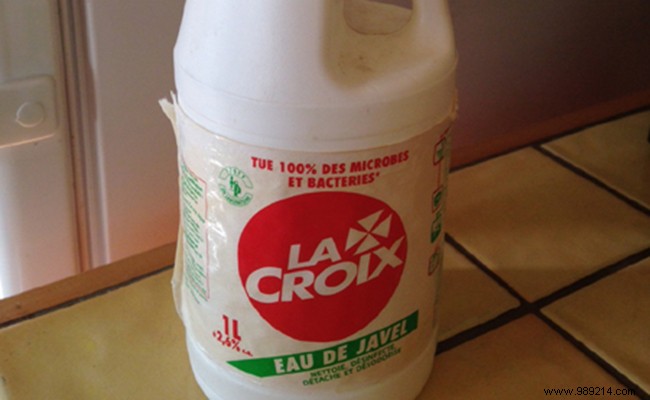Bleach has been part of our daily lives for several centuries now. If, at the beginning, we advocated its multiple advantages, as scientific advances are made, we discover that this product is not as beneficial as it seems. A point on the advantages and dangers of this household product.

Bleach owes its name to an old village called Javel located in Paris and which hosted a factory specializing in the production of chemicals. In the form of a liquid solution, bleach is best known for its bleaching and disinfecting actions. It can be kept for up to one year and is sold in many levels of dilution.
Thus, when it is at 40° chlorometric, it is called bleach extract. It is called bleach as such when the product titers between 9.6° and 36° chlorometric and eau de labarraque when the chlorometric is 2°. On the market, it is also possible to find bleach tablets. In addition, this solution is widely used in other detergent products that disinfect and clean at the same time.
Bleach is a sporicidal, fungicidal, virucidal, bactericidal and biocidal solution. It thus has the capacity to eliminate all the microbial agents which are on a surface or on a material. In the world of medicine, it remains particularly popular because it also contains disinfectant and antiseptic properties. Bleach remains one of the most essential products for effectively cleaning the floor, garbage cans, sanitary facilities or toilets. When combined with other detergent solutions, it has deodorizing, whitening and stain-removing properties.
It is used to treat drinking water. But beware, it does not contain any surfactant, so it does not clean! Its effectiveness is particularly appreciated when cleaning white laundry that has been stained with tea, coffee, wine and other oxidizable stains. Just soak the white garment in water combined with bleach for a few minutes to see the stain disappear completely. Be careful, however, you should avoid using it on colored linens because of its powerful bleaching power.
Despite its innumerable advantages, bleach also has several disadvantages that make it less and less used today in private homes. Moreover, in Germany, it is prohibited for domestic use. It turns out that this product is quite harmful to the environment and health. Toxic, it can actually cause eye and skin burns in the most sensitive people. Sometimes nausea and headaches may appear after prolonged exposure.
Having a corrosive action, it has harmful impacts on the environment if we are to believe some studies. As the product contains chlorine, when released into the environment, it can associate with organic particles and thus become persistent and toxic. In addition, when bleach is used too frequently and in large quantities in the home, it leads to an increase in the resistance of certain pathogenic germs which will therefore become difficult or even impossible to eliminate.
For domestic use, other products can be quite sufficient to clean:no need to pour bleach all over the place when you get down to cleaning: